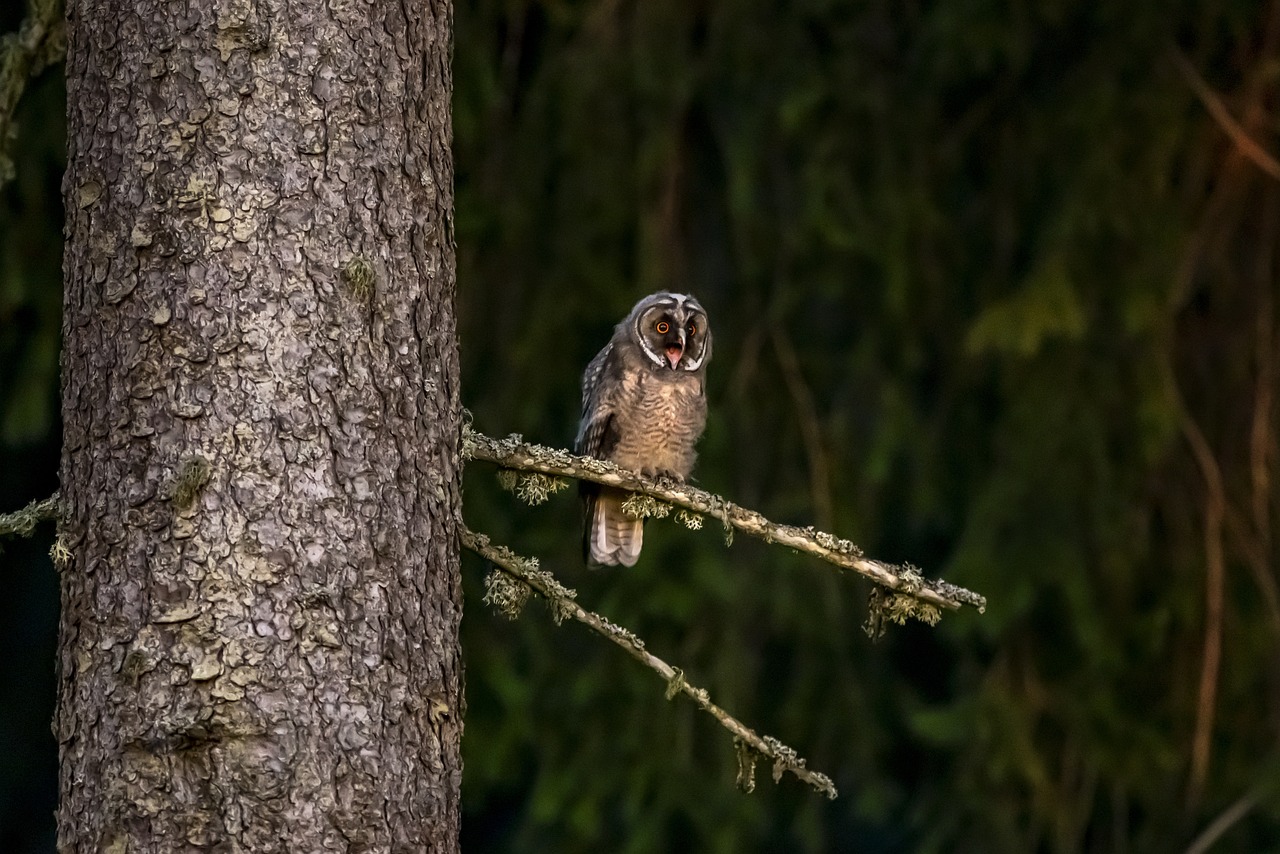The Long-eared Owl (Asio otus) is a medium-sized owl species known for its distinctive long “ear” tufts, which are actually feather tufts positioned on top of its head. Here are some key features and characteristics of the Long-eared Owl:
- Appearance: Long-eared Owls have a streaky brown plumage with intricate patterns of dark streaks and bars, providing excellent camouflage against tree bark and foliage. They have prominent orange or yellow eyes set in a pale facial disk. The “ear” tufts are not ears but rather elongated feathers on the top of their heads that they can raise or flatten as a form of communication or camouflage.
- Size: Long-eared Owls measure around 35 to 40 centimeters (14 to 16 inches) in length, with a wingspan of approximately 90 to 100 centimeters (35 to 39 inches). They have a slender body and long wings relative to their body size.
- Habitat: Long-eared Owls inhabit a variety of woodland and forested habitats, including deciduous and coniferous forests, scrublands, and sometimes urban parks and gardens. They prefer areas with dense vegetation and open spaces for hunting.
- Range: The Long-eared Owl has a wide distribution across much of North America, Europe, Asia, and parts of northern Africa. It is a resident species in many regions but may undergo seasonal movements or migrations in response to changes in prey availability or weather conditions.
- Behavior: Long-eared Owls are nocturnal hunters, primarily preying on small mammals such as mice, voles, and shrews. They hunt by perching in trees or on elevated perches and scanning the ground below for prey. They have excellent hearing and rely on sound cues to locate and capture their prey in darkness.
- Reproduction: Long-eared Owls typically nest in dense vegetation or trees, often using abandoned nests of other bird species. They lay a clutch of around 3 to 6 eggs, which are incubated primarily by the female for approximately 25 to 30 days. Both parents participate in feeding and caring for the young owlets until they fledge and become independent.
- Conservation: While the Long-eared Owl is not considered globally threatened, local populations may face threats from habitat loss, habitat degradation, and human disturbance. Conservation efforts focus on habitat protection, restoration, and management, as well as monitoring of populations to ensure their long-term survival.
Overall, the Long-eared Owl is a fascinating and secretive owl species known for its cryptic plumage, nocturnal habits, and remarkable hunting abilities.
Views: 14
Subscribe to the newsletter:
